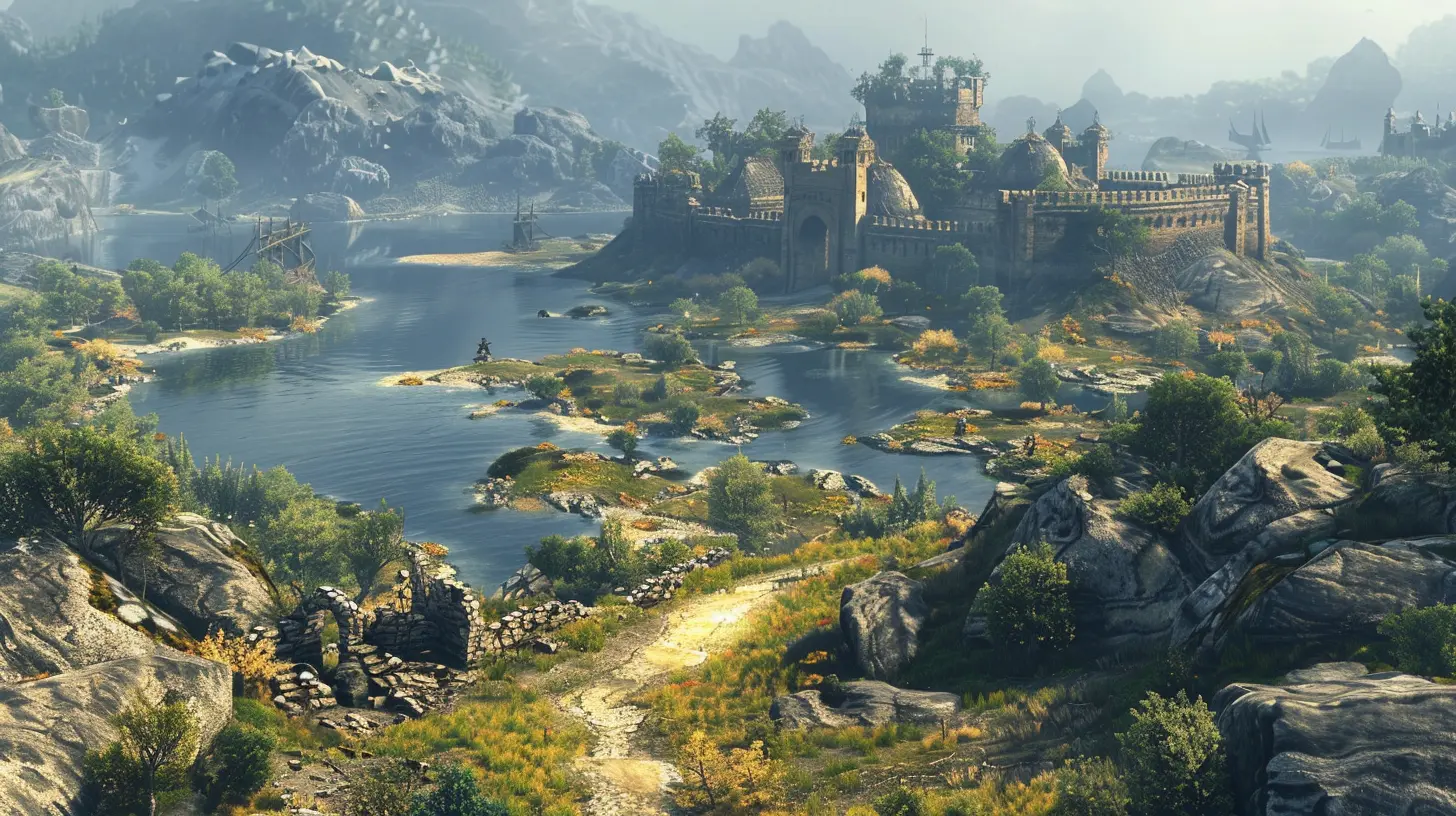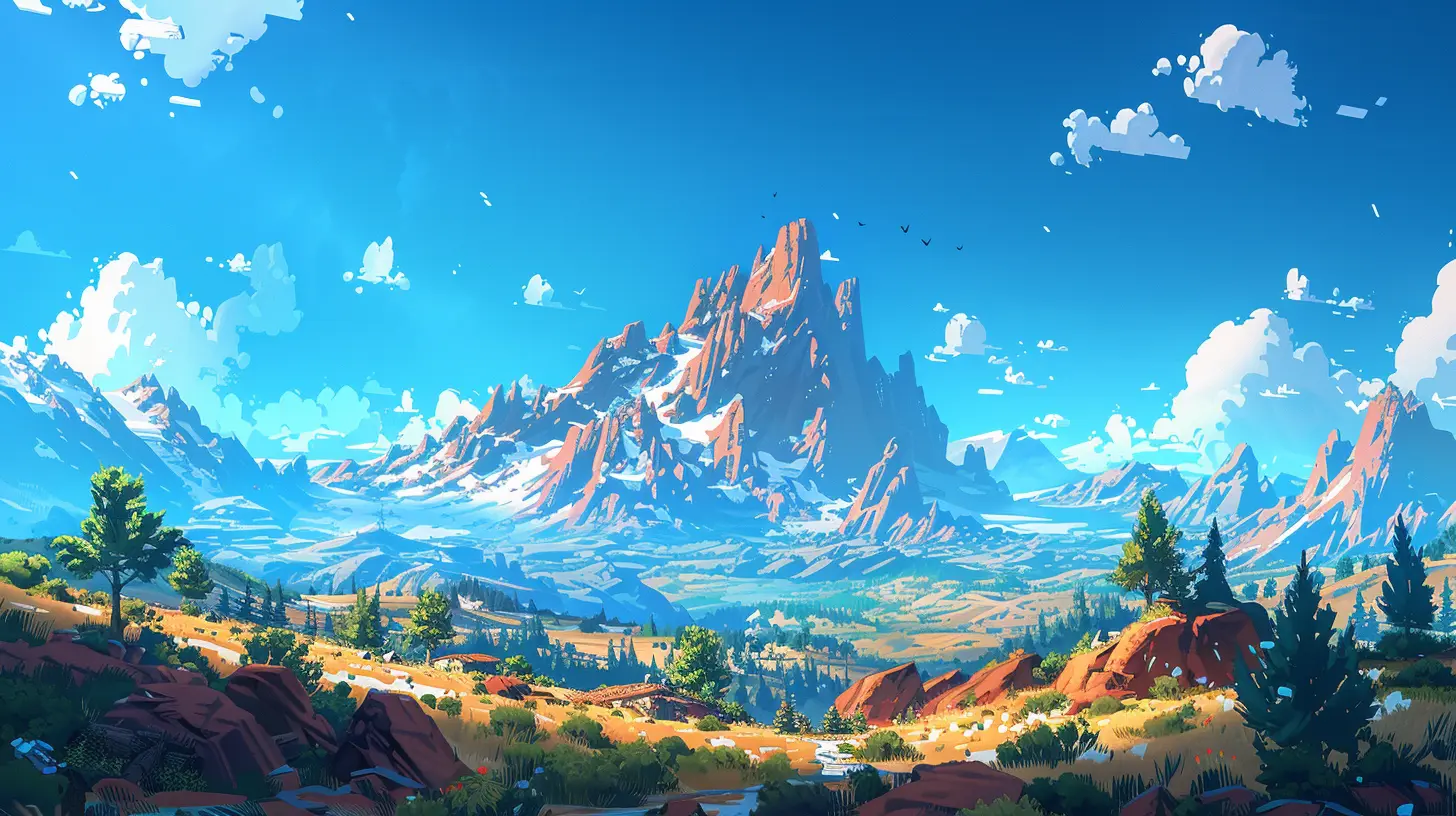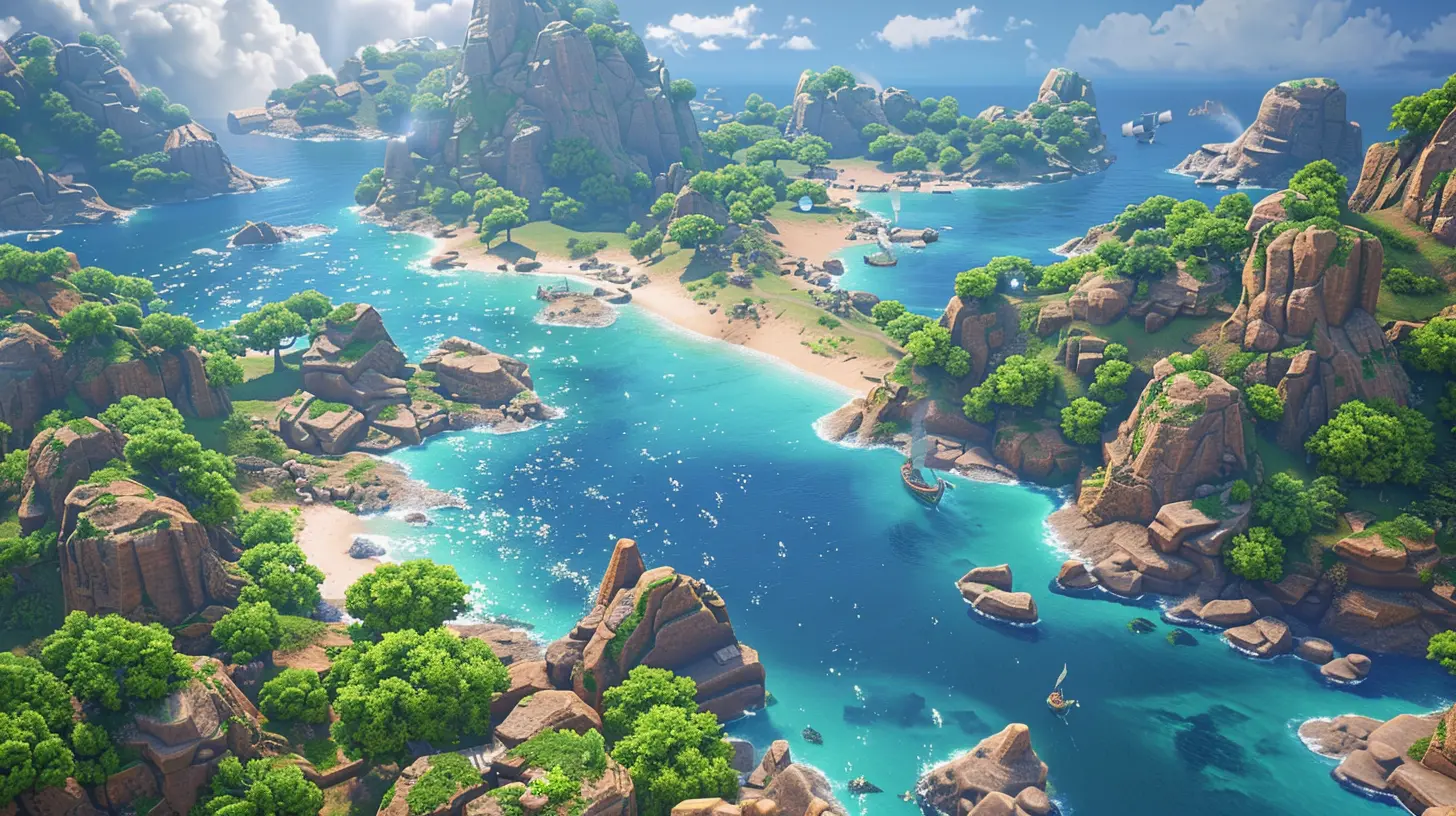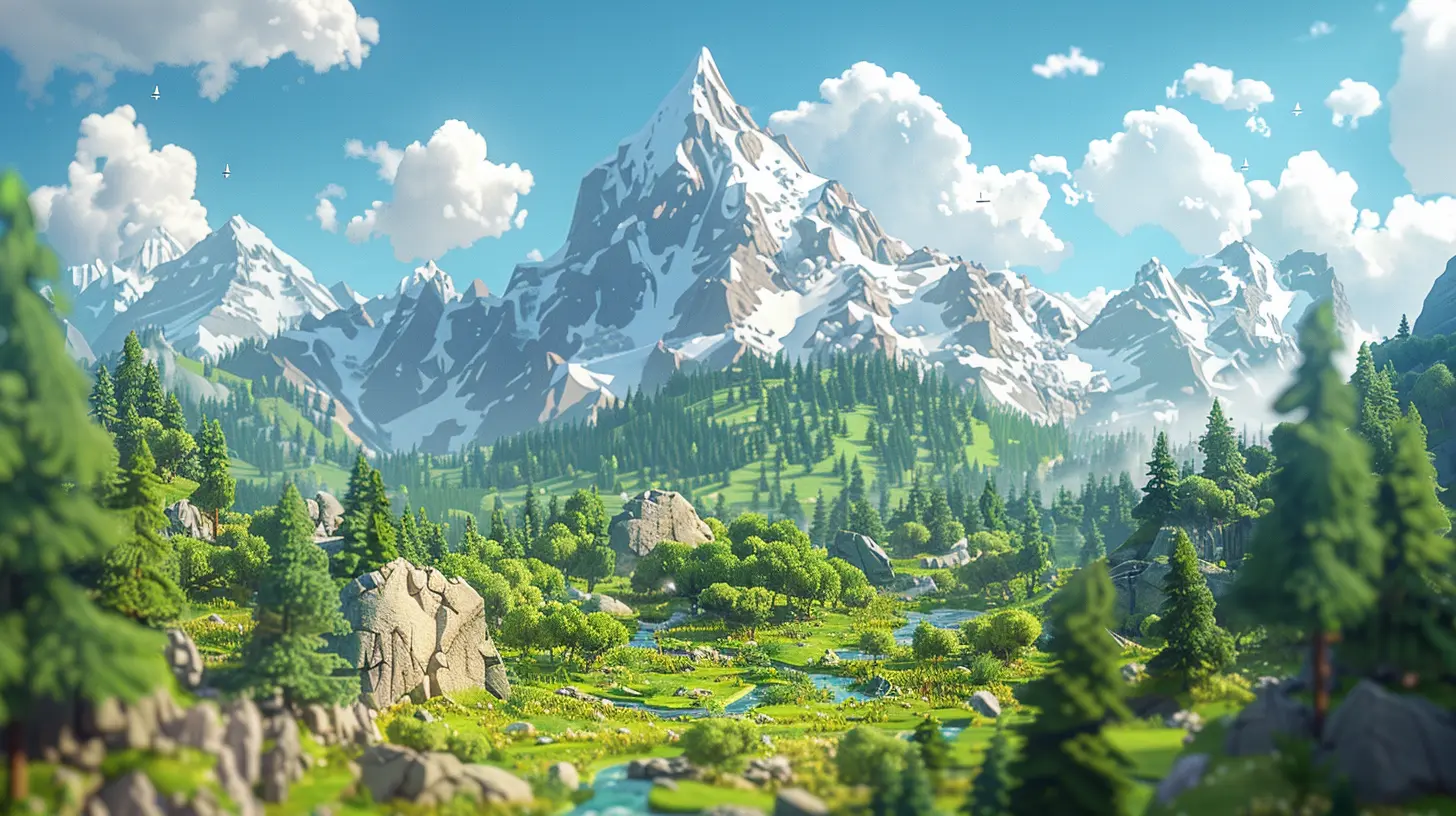Evolving Landscapes: How Terrain and World-Altering Mechanics Define Sandbox Games
27 August 2025
If you’ve ever jumped into a sandbox game and spent more time terraforming a mountain than completing a mission, congratulations—you’re not alone. There’s something genuinely satisfying about bending the world to your will, shaping the terrain like digital clay, and watching your creative (or chaotic) experiments unfold. That’s the magic of sandbox games.
But what makes these worlds feel so alive and responsive? Why do we keep going back to reshape our pixelated paradises or apocalypse-stricken wastelands? It's all about the evolving landscapes and those juicy, world-altering mechanics that make this genre so addictive.
In this article, we’re diving deep into how terrain and gameplay elements that change the world around you have become the soul of sandbox games. So, grab your pickaxe, charge your spell meter, or fire up your creative mode—because we’re going on a journey through the heart of your favorite virtual worlds.
What Exactly Are Sandbox Games?
Before we start tearing up the landscape, let’s get a quick refresher on what sandbox games actually are. Think of them like a giant digital playground. Instead of giving you a strict mission structure or linear path, sandbox games hand you the reins and say, “Go wild.”You’re free to build, destroy, explore, and sometimes even rewrite the rules of the world itself. There are usually goals, sure—but how you get there (or whether you get there at all) is up to you.
Popular examples? Minecraft, Terraria, No Man’s Sky, Valheim, Rust, and plenty more. But these aren’t just building simulators—they’re living, breathing worlds that evolve with you.
Terrain: The Foundation of the Sandbox
Let’s get down to earth—literally. Terrain is the canvas of every sandbox game. Whether you're mining blocks, flattening landscapes, or watching your environment slowly change over time, the land beneath your feet is where it all begins.The Power of Procedural Generation
You know that moment when you generate a new world and just stand there, stunned by the valleys, mountains, or deserts sprawled out before you? That’s procedural generation at work.Most sandbox games use it to ensure every playthrough feels new and full of possibilities. It’s like shuffling a deck of infinite landscapes and drawing a completely unique world every time.
It doesn't just keep things fresh—it fuels player curiosity. You'll always want to peek over the next hill or dive into a new cave simply because you don't know what’s out there.
Shaping the Land: You’re Not Just Playing; You’re Creating
One of the most defining features of sandbox environments is how interactive and malleable they are. In games like Minecraft or Terraria, the whole point is to dig, build, and shape the environment in whatever way feels right to you.Want to build a floating castle? Go for it. Dreaming of a base inside a volcano? Totally doable.
It's this tactile interaction with the terrain that makes the world feel like it’s truly yours. You're not just passing through—you’re leaving your mark, one block or explosion at a time.
Dynamic Worlds: How Environments React and Evolve
Static worlds are so last decade. The next step in immersive sandbox design is dynamism—worlds that aren’t just visually appealing but alive with change.Weather and Environmental Effects
Imagine building your village, only for a storm to roll in, damaging your structures and flooding a nearby river. These aren’t just cosmetic features—they impact gameplay in meaningful ways.Games like Valheim introduce unpredictable weather that influences survival mechanics, while Next-gen titles are experimenting with systems where your actions (or inactions) can literally reshape ecosystems.
The world fights back, adapts, and keeps you on your toes.
Time and Seasons
Adding the passage of time and seasonal changes does wonders for immersion. In Stardew Valley, the seasons guide your farming choices. In Minecraft, day and night cycles shape your risk level (hello, creepers at night).It’s no longer just about building stuff—it’s about adapting to the world as it shifts around you. It keeps your routines from going stale and makes every play session feel fresh.
World-Altering Mechanics: Changing the Game (Literally)
Now we’re getting to the juicy part—when the game hands you tools, powers, or mechanics that fundamentally alter the game world. These are the sandbox moments where you don’t just play in the world—you transform it.Terraforming: Sculpting Like a Digital Da Vinci
Whether you're flattening land to build a megabase in No Man’s Sky or creating rivers to irrigate crops in a modded Minecraft world, terraforming is pure creative freedom.It’s not just about utility—it’s about expression. You start with a raw, untamed world and slowly, methodically turn it into your own masterpiece. This is where sandbox games go from “game” to “art medium.”
Destruction as Creation
Sometimes, you gotta tear things down to build them up. Games like Red Faction: Guerrilla made environmental destruction the main mechanic. Blow up a building, collapse a bridge—every action leaves a scar on the world.In survival sandbox games like Rust or The Forest, you can destroy trees, wreck enemy bases, or level entire areas. It’s visceral, thrilling, and oddly satisfying.
Destruction isn’t just chaotic fun—it’s a way to assert dominance, claim space, and push your story forward in a world that remembers what you’ve done.
Automation & Tech Trees That Change Everything
Some sandbox games introduce technology trees and automation systems, and these can radically transform the landscape.Factorio lets you turn pristine wilderness into a sprawling industrial hellscape. Satisfactory does the same, with towering conveyor belts threading through lush forests.
Your progress isn’t just measured in levels—it’s stamped visibly onto the land. The map changes because of you.
Emergent Gameplay: When Mechanics and Players Collide
Here’s the really wild part—sandbox games often result in experiences that even the developers didn’t plan.Why? Because when you give players the power to reshape the world, unexpected things happen. You see massive online projects, like 1:1 recreations of cities in Minecraft or eco-driven gameplay scenarios in Eco.
Community-Driven Construction
In multiplayer sandbox titles, terrain and world mechanics become community tools. Whether it’s building mega-bases in survival games or setting up trade routes in open-world sandboxes, players start creating content for each other.And the most amazing part? Entire in-game economies or cities can emerge organically.
Player Narratives Shaped by the World
When the world is reactive, your story becomes uniquely yours. Maybe a tornado wiped out your fort in 7 Days to Die, or a corruption biome crept too close in Terraria. That’s the beauty of sandbox games—the terrain and evolving mechanics write the plot alongside you.No two stories are the same.
The Emotional Impact of World Manipulation
Here’s something that often gets overlooked: the emotional connection you build when you alter a world over time.When you spend dozens of hours reshaping terrain, reinforcing your base, or watching seasons pass in your farm village—you start to care. That world becomes yours in a way a linear, story-driven campaign just can’t match.
It isn't just about beating the game. It's about building something meaningful—whether that meaning is an epic castle, a humble shack, or just a perfectly planted line of trees.
The Future of Terrain and World Mechanics in Sandbox Games
As technology improves, sandbox games are getting even more ambitious. We’re talking real-time terrain deformation, AI-driven world evolution, and persistent ecosystems that remember your every move.AI and Procedural Storytelling
Developers are starting to use AI not just for random terrain generation, but for crafting procedural quests and character behavior based on your world. Imagine a game where the terrain changes influence the plot direction. It’s already in the works.Persistent Online Worlds
Expect more games where your actions are permanent and shared across the globe. Persistent online sandboxes like Dual Universe aim to let millions sculpt a single, shared planet—with politics, war, and construction all driven by players.That’s not just a game. That’s a virtual society.
Final Thoughts: The World Is Yours—Literally
Sandbox games aren't just about freedom. They’re about consequences, creativity, and control. The evolving landscapes and world-altering mechanics are more than just features—they’re the beating heart of this genre.They offer something rare in gaming: the chance to leave a legacy, to shape your story, and to feel like a god… or at least a really persistent urban planner.
So next time you log into your favorite sandbox and start shaping the land, remember—you’re not just playing the game.
You’re remaking the world.
all images in this post were generated using AI tools
Category:
Sandbox GamesAuthor:

Pascal Jennings
Discussion
rate this article
1 comments
Vance McQuaid
This article beautifully captures the essence of sandbox games, highlighting how evolving terrains create unforgettable adventures and player experiences.
September 14, 2025 at 2:35 AM

Pascal Jennings
Thank you for your kind words! I'm glad you found the article resonant with the essence of sandbox games.

